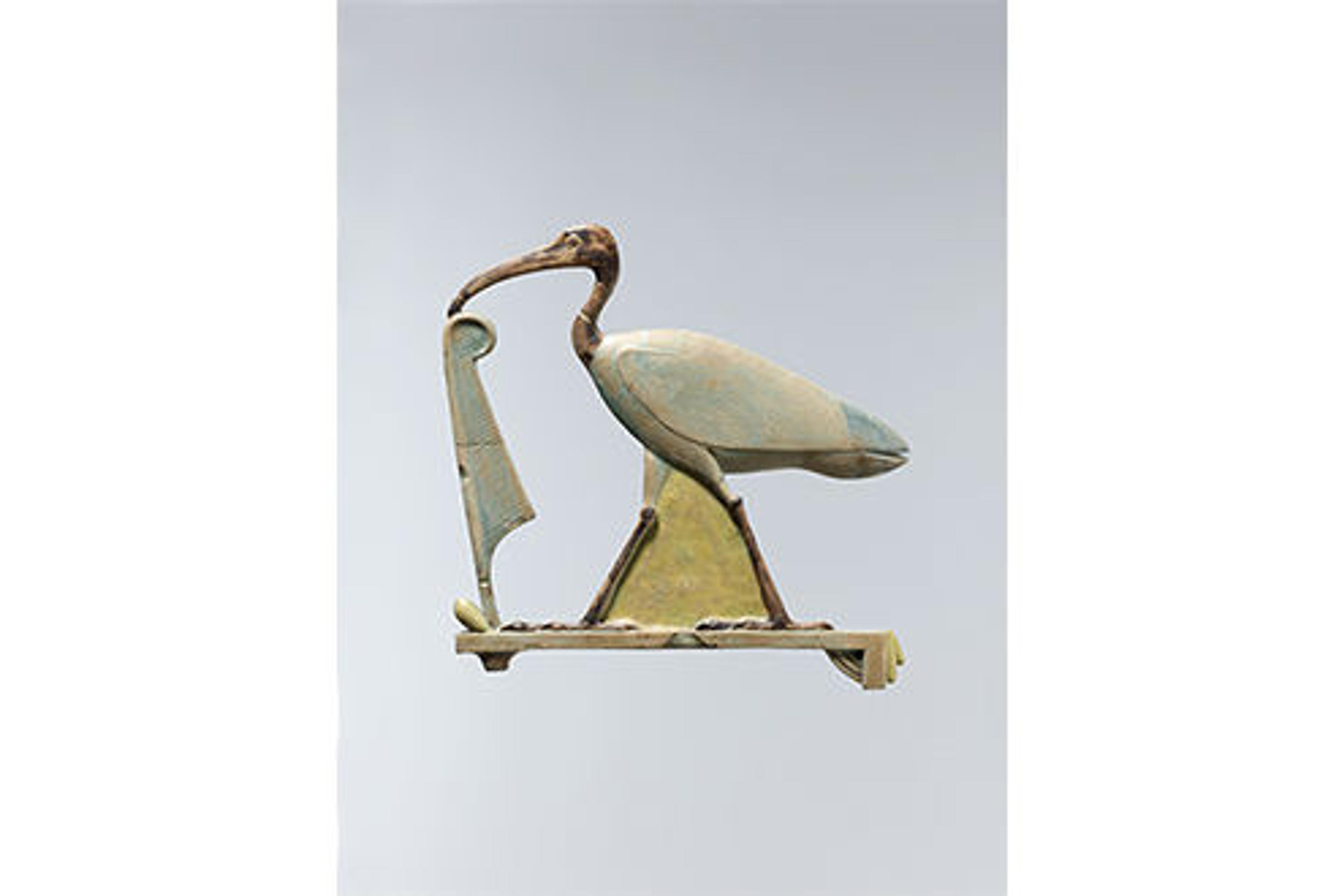
Opening Date:
July 1, 2016 Location: The Met Fifth Avenue, Floor 1
Galleries 133 and 134
The Lila Acheson Wallace Galleries of Egyptian Art
A nearly 72-foot-long ancient Egyptian Book of the Dead, colorful figural tiles from a shrine from Hermopolis (the city of the god Thoth), and more than 200 additional works of art created in Egypt between 332 to 30 B.C. will return to view at The Metropolitan Museum of Art on July 1 with the reopening of two recently renovated galleries dedicated to Ptolemaic art. The Ptolemies were a dynasty of Macedonian rulers of Egypt descended from one of the generals of Alexander the Great. During the three centuries of Ptolemaic rule, Greek settlement of Egypt increased, and Hellenistic and Egyptian artistic styles coexisted and blended. The two rooms, galleries 133 and 134 in the Lila Acheson Wallace Galleries of Egyptian Art, are located midway between the Grace Rainey Rogers Auditorium and The Temple of Dendur in The Sackler Wing. A number of loans from a private collection will be included.
The reinstallation of these galleries was made possible in part by Marica and Jan Vilcek and John A. and Carole Moran.
Originally installed in 1976, the Ptolemaic galleries closed for renovation in July 2015. A drop ceiling was removed, adding some six feet to the height of the rooms; a long case that divided the space has been replaced with walk-around cases with ultra-clear clear glass to accommodate close viewing; and a wall-mounted case that protruded into the room has been recessed cleanly into the wall.
New archaeological finds and fresh analyses from the past four decades have brought about a deeper understanding of this period. These insights—together with discoveries made by curatorial and conservation staff of The Met about works of art in the collection—will be incorporated into the enhanced presentation.
Two thematic areas anchor the new installation. One, focusing on temples, which were at the center of Egyptian towns and populations, includes the large faience tiles from a shrine, an array of statuary of gods in bronze and stone, and temple offerings ranging from gold jewelry and silver vessels to the wrapped animal mummies associated with animal cults. The other, focusing on royalty and the elite, includes sculptures of queens Arsinoe II and Cleopatra VII; faience wine vessels bearing the delicate likenesses of Ptolemaic queens; elegant relief plaques associated with royal cults; statuary of officials; and personal, domestic, and funerary items.
Also returning to the galleries will be three wrapped mummies and their coffins. CT scans produced in collaboration with NYU Langone Medical Center’s Department of Radiology reveal a remarkably large set of amulets within the wrappings of a man named Nesmin.
The largest work in the galleries is the nearly 72-foot-long exemplar of the Book of Coming Forth by Day, commonly known as the Book of the Dead—a compilation on papyrus of incantations, spells, and prayers designed to assure the deceased admittance to the Hereafter, participation in the eternal cycle of rebirth, and protection from evil powers and demons. One of several copies of this work at The Met, the Book of the Dead of the Priest of Horus, Imhotep (Imuthes), features a continuous frieze of vignettes, as well as several larger drawings that complement or substitute for individual incantations. The best-known of these illustrates the spell for the Weighing of the Heart—the moment when the deceased faces the tribunal of Osiris (ruler of the dead). With the assistance of the falcon-headed Horus and the jackal-headed Anubis, the heart of the deceased is weighed against a feather (the symbol of Ma’at, the goddess of cosmic order).
A study case of more than 300 small objects arranged thematically—including amulets and jewelry—will enhance visitor understanding of the art and culture of the Ptolemaic period.
Two new Audio Guide messages—which are downloadable on visitor smartphones—contain brief slide shows with text and audio about this Book of the Dead. The first message is an introduction to the work; the second explains the Weighing of the Heart.
An audio tour, part of The Met’s Audio Guide program, is available for rental ($7, $6 for Members, $5 for children under 12).
The Audio Guide is supported by Bloomberg Philanthropies.
The Audio Guide is also available at no cost at metmuseum.org/audioguide.
The Ptolemaic galleries will be featured on The Met’s website, through blog posts giving an overview of the galleries, and a look into particular topics including the mummy of Nesmin and the Book of the Dead, as well as on Facebook, Instagram, and Twitter.
The renovation of the Ptolemaic galleries was initiated by Dorothea Arnold, now Curator Emerita of the Department of Egyptian Art, and overseen by Diana Craig Patch, the Lila Acheson Wallace Curator in Charge. Marsha Hill, Curator, was responsible for the installation with Janice Kamrin and Isabel Stünkel, Associate Curators. Conservation was done by Ann Heywood, Conservator, Objects Conservation, and Rebecca Capua, Conservator, Paper Conservation. Exhibition design is by Michael Langley, Exhibition Design Manager; lighting is by Clint Ross Coller and Richard Lichte, Lighting Design Managers, all of the Museum’s Design Department. Mahan Khajenoori was the Project Manager. Graphics are by Pamlyn Smith.
# # #
Updated June 29, 2016
Image: Inlay depicting Thoth as the ibis with a maat feather. Late Period-Ptolemaic Period (4th century B.C.). Probably Hermopolis. Faience. Purchase, Edward S. Harkness Gift, 1926 (26.7.992)